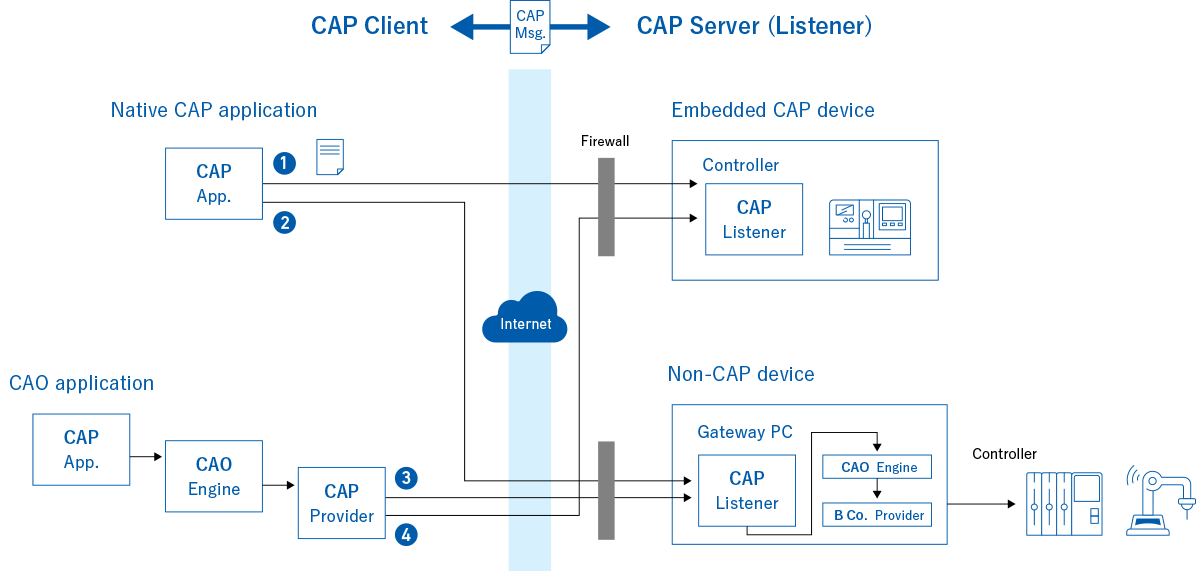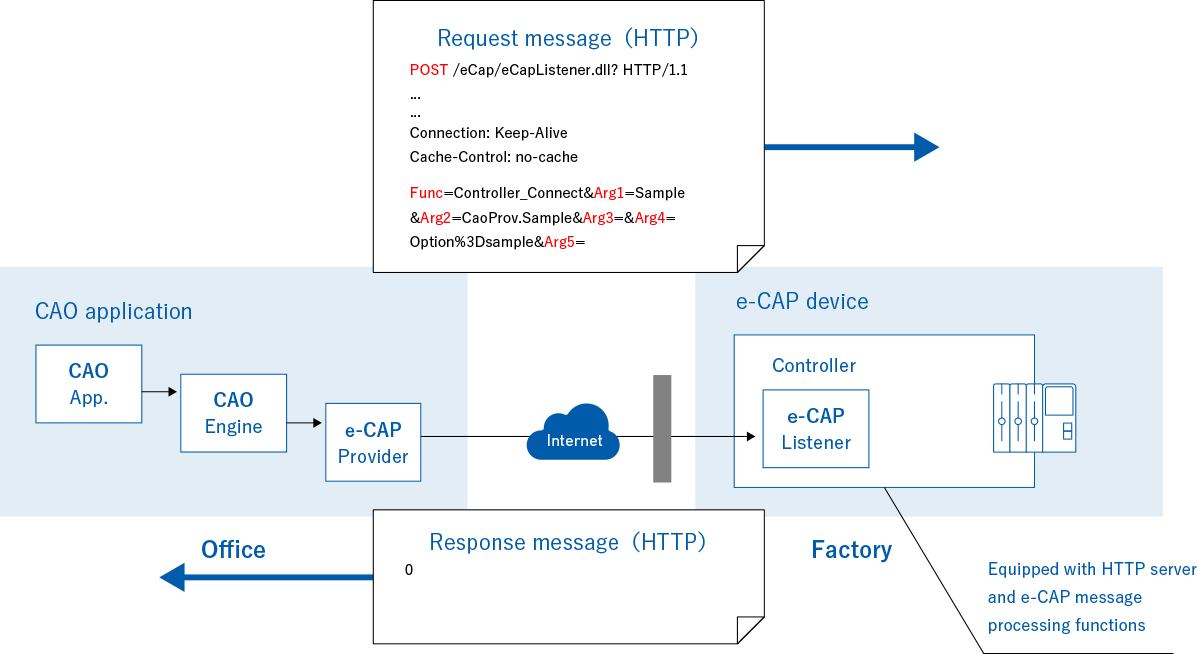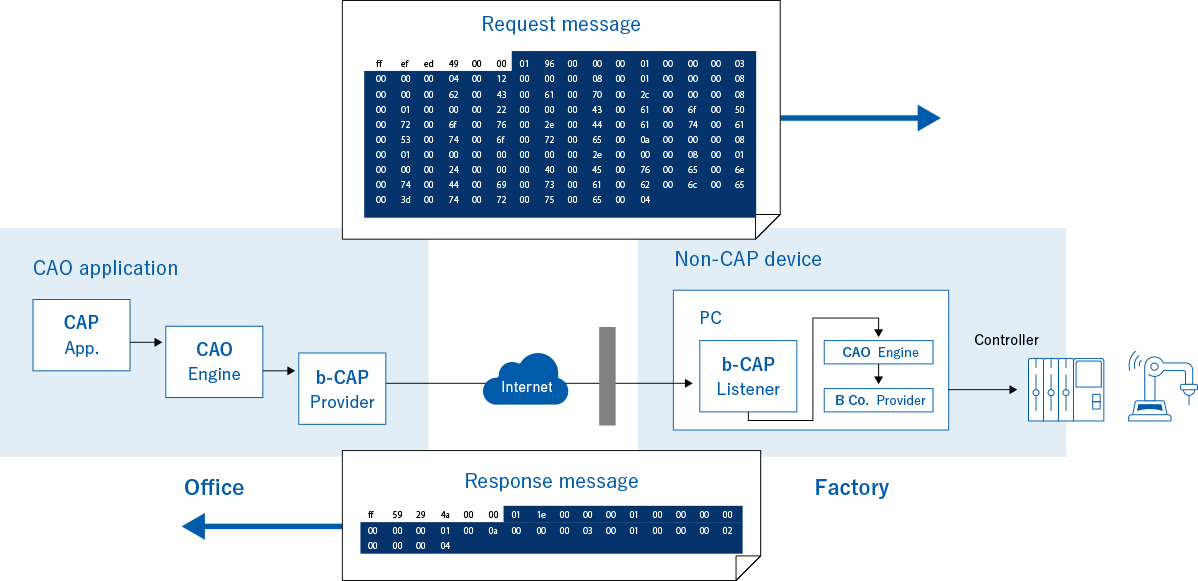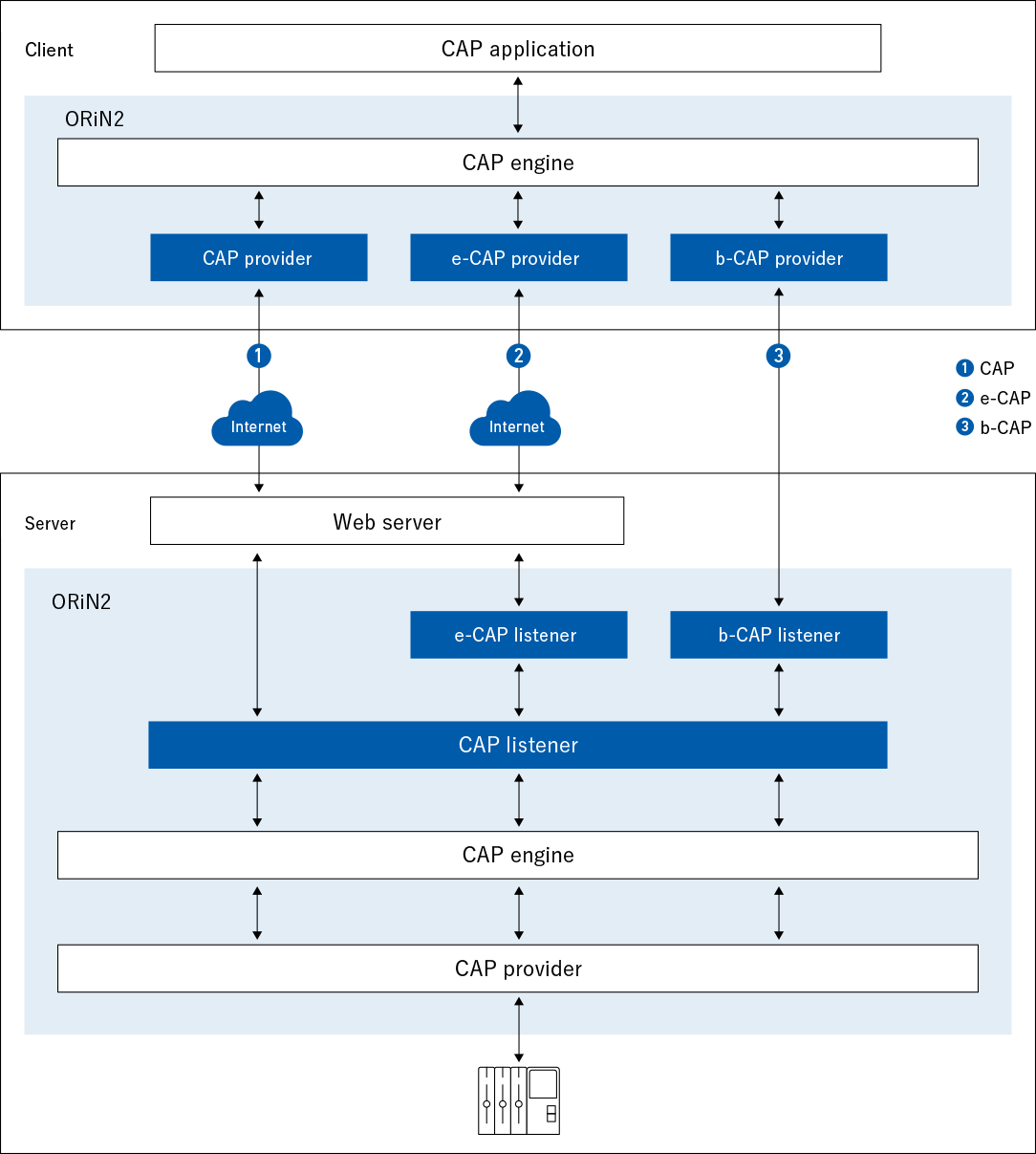Outline of CAP
CAP
CAP, which stands for Controller Access Protocol, is an Internet communications protocol for access to CAO providers via the Internet.
While the CAO engine accesses the CAO provider remotely using DCOM, security constraints prevent DCOM accessing the Internet.
Remote access through the firewalls installed by companies is also difficult. CAP has been developed to solve the problem.
CAP is a protocol which enables remote access between objects via the Internet, based on SOAP (simple object access protocol). With a CAP provider implementing CAP functions, messages according to CAP specifications can be created and transmitted. This allows easy connection with remote CAO providers via the Internet as long as HTTP connection is available in the environment.
As presented in the diagram below, a CAP provider sends CAP messages (SOAP packets) to the web server for remote connection to a CAO provider. The CAP listener called by the web server analyzes the messages and calls the target CAO provider to deliver the necessary information. This enables client applications to access devices via the Internet as with access to devices that are present locally.

There are four types of connections between the CAP client and server as shown in the diagram above. ① and ② indicate routes for the cases where the client application implements its CAP functions. ③ indicates a route for access with the intermediation of the function of the CAO remote engine and CAP providers beyond the Internet and firewalls. ④ indicates a route for the cases where the server (device) side embeds its CAP functions by use of XML parser and SOAP. The routes for ③ and ④ depend on the option argument of the AddController method when the CaoController object is generated. A conceptual diagram of communication of CAP messages between the CAP client and server is presented below.


■e-CAP
e-CAP is a protocol to store necessary information with a POST command in HTTP to perform communication. When a CAP provider exchanges information with a CAP listener via the Internet, the communication is conducted by conveying the information with SOAP packets in an XML format. This requires more processing than direct connection based on DCOM and generates overhead.
In embedded devices, it is also difficult to implement processing to handle SOAP packets or the functions of XML parser to interpret XML. e-CAP has been developed to solve these problems. A conceptual diagram of communication of e-CAP messages between the e-CAP client and server is presented below.

■b-CAP
b-CAP is a protocol for communications using binary data based on TCP/UDP. While following the concept of CAP, this protocol also aims to improve the transmission speed and is implemented as TCP stream communication. A conceptual diagram of communication of b-CAP messages between the b-CAP client and server is presented below.

- ■Response message

In this website, CAO application, CAO engine and CAO provider are also referred to as ORiN application, ORiN engine, and ORiN provider, respectively.
